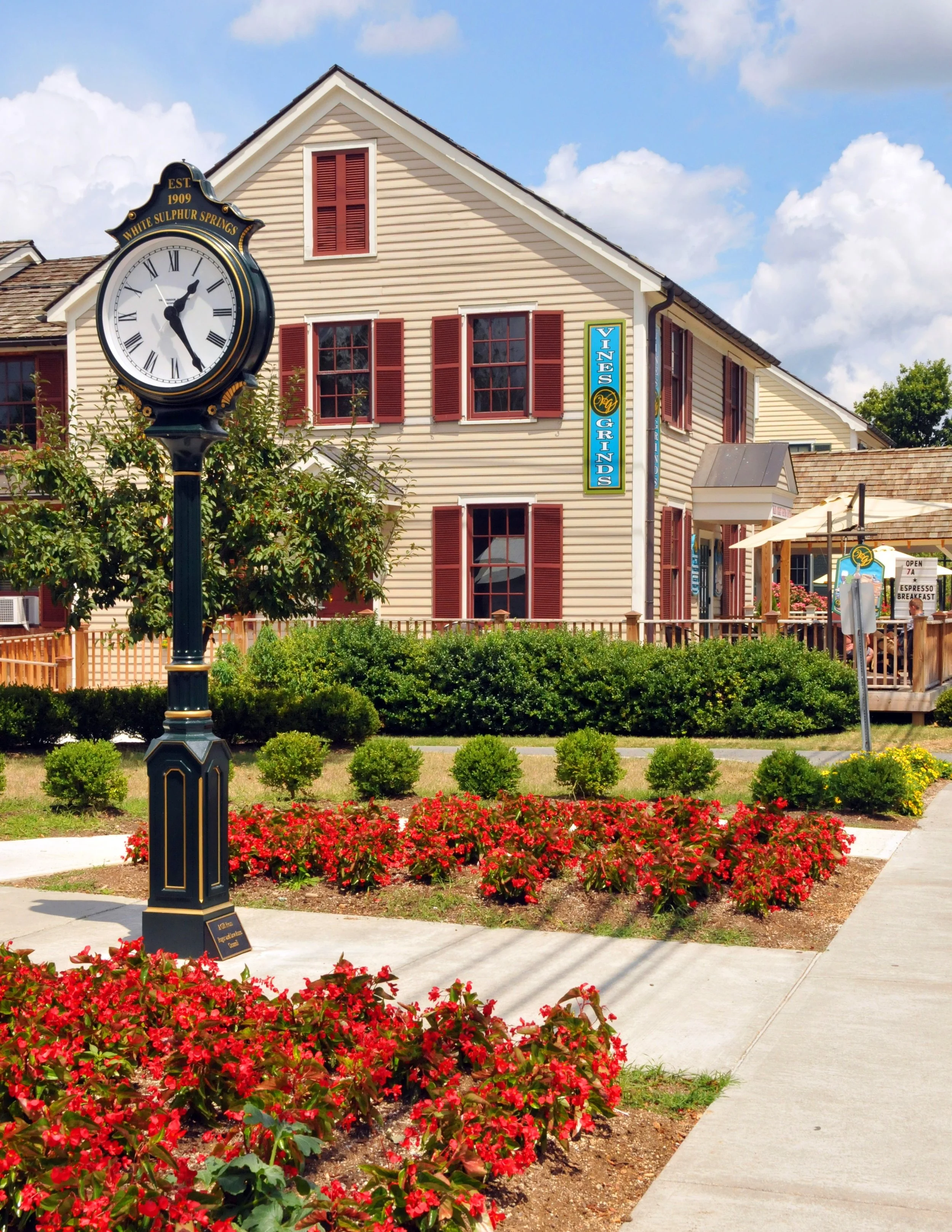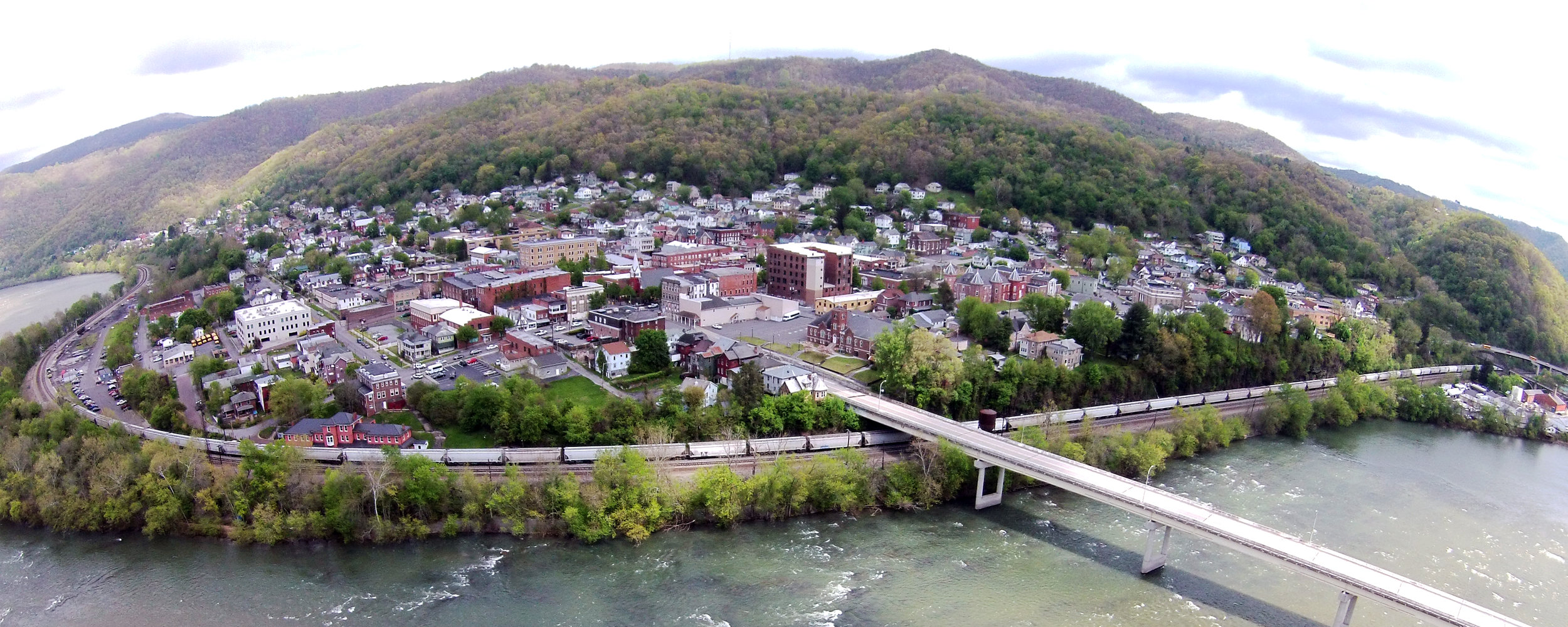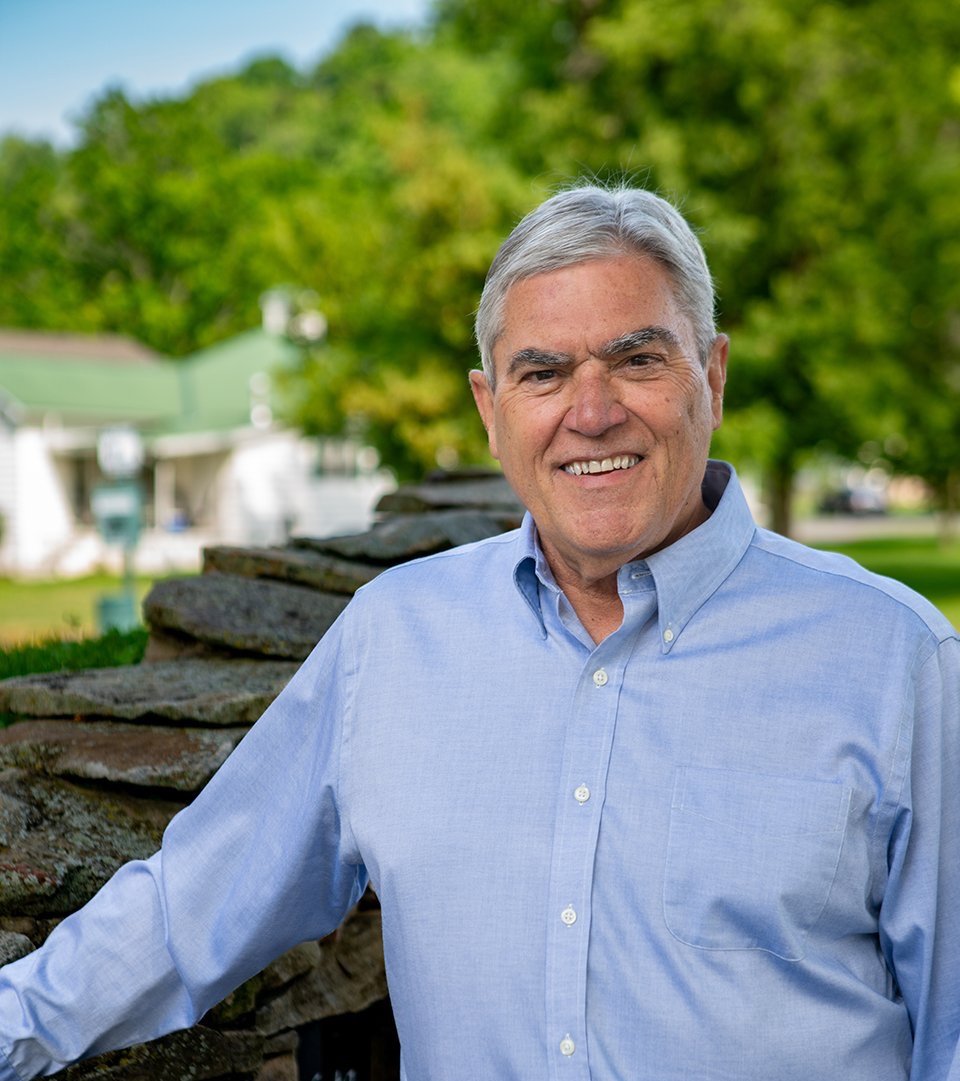White Sulphur Springs Main Street

By Katie Gwinn
Here’s a familiar story—a new highway is built that bypasses the Main Street of a little town. The local school consolidates with a larger school elsewhere, and the quaint downtown businesses relocate or close altogether. The storefronts become run-down, and new business owners are reluctant to move in. Shiny new stores are built near the freeway, etcetera, ad infinitum. This could have easily been the story of White Sulphur Springs, had a group of engaged locals not stepped in to help.
In 1989, a group of inspired citizens came together to search for ways to revitalize White Sulphur’s downtown. The town, once known as “Spa City” for Virginia’s wealthy, had seen better days. Paint was flaking from a number of empty storefronts, the high school had been closed, and locals feared that no one had a reason to gather downtown anymore. After brainstorming ideas and options, the locals decided to first work to simply improve the appearance of the business district. They set up a fund to raise money for matching grants to property owners who wanted to recuperate the looks of their downtown buildings. Building owners that spent three hundred dollars improving the looks of their storefront would be met with an additional three hundred dollar grant to continue their work. The local group also awarded an additional grant of five-hundred dollars each year to a local business for exterior renovations. The results were slow at first, but encouraging.
They then applied to the newly-created Main Street West Virginia program in hopes of procuring funding to further revitalize their downtown. Founded just a year before, Main Street West Virginia (MSWV) set out to use a “common sense approach” to help communities tackle the problem of downtown commercial revitalization. White Sulphur Springs was accepted as one of the twelve Main Street communities in the state and awarded the resources to begin the Main Street White Sulphur Springs (MSWSS) program. In addition to financial assistance, MSWV offered technical assistance to its partner communities to help them make their local efforts more successful.
With Main Street WV’s help, MSWSS continued to work on freshening up the business district and attracting new entrepreneurs while taking on their next task—getting locals and visitors to stroll through downtown. They began experimenting with a “Third Thursday,” an afterhours gathering to promote the downtown district and its businesses. In order to draw the largest demographic and have something for everyone, MSWSS facilitated a number of community events around Third Thursday, from the traditional to the sophisticated. The initiative was a local hit, and MSWSS has been expanding the program since. Sadie Fraley, current Program Manager for MSWSS, says that “Third Thursdays help promote downtown business by hosting such events as a business mixer, live music, wine tasting, artist and author showcase, movie in the park, and putt-putt golf tournaments.” Appealing to both locals and tourists is something that Fraley excels at—both in her role with MSWSS and her business, Vines and Grinds. She has worked to find that comfortable balance in her café/wine shop by offering hearty breads, sandwiches and morning coffee alongside fine wines, artisan cheeses and gourmet pastries.
While Third Thursday was still in its infancy, MSWSS worked to resurrect White Sulphur’s extinct Dandelion Festival by offering a mix of traditional and non-traditional activities. The event has always had a lot of the usual fair stuff, according to Fraley, like “live music, fireworks, art show, car show, festival food and vendors and lots of kid’s activities.” But now the festival also features a 5K run, a fishing derby, an art opening with a wine and cheese reception, a pretty pet contest, and even something called a “male dandy legs contest.” Whatever MSWSS is doing with the festival, it seems to be working. Even in rural West Virginia, where the small town fair is an institution, The Dandelion Festival stands out among the competition. In its 6th year back, the Dandelion Festival was recently voted as one of the 10 best celebrations in the state.
But why the dandelion? The members of MSWSS see a lot of dandelions in their town and a lot of the town in each dandelion. The little yellow flower is resolute, resilient, and even obstinate. As the organization’s slogan states, “We celebrate the dandelion, because it is determined like our people and it brings out the child in us.”
In between organizing Third Thursdays and the Dandelion Festival, the members of MSWSS work with other local organizations to make the town more attractive, accessible, enjoyable, and distinctive. They built a new covered gazebo along Howard’s Creek, installed an old-fashioned town clock, and updated the town’s signage. They also helped construct trail extensions for the network of hiking and biking trails in nearby Greenbrier State Forest to encourage visitors to explore both White Sulphur and its surrounding public land. They foresee a network of hiking and biking trails around the town, and were recently awarded a grant to build a scenic trail that meanders along the creek from downtown to the Memorial Park.
For Sadie Fraley, collaboration is the key to success in small-town community development. The City of White Sulphur Springs is working in concert with Main Street to add new sidewalks, brick paving stones, ornamental Victorian street lights and fresh landscaping to the Western end of the downtown.
She added that MSWSS relies “heavily on grants, sponsorships, and partnerships with The City of White Sulphur Springs, the WSS Rotary Club, Lion’s Club, Garden Club, Girl Scouts, businesses, individual donors and volunteers.” Many of their projects have been funded by private grants, including a fifty-thousand dollar award from the Suzanne and Alexander Rhea foundation to beautify downtown with façade upgrades, benches, trash cans, banners, and flowers.
Larry Klein, retiring president of MSWSS board, echoes Fraley’s belief in cooperation. As General Manager of the Sporting Club, Klein has seen firsthand the benefits of tourism to White Sulphur’s Main Street community. “Since the club was built in 2001,” he said, “many of its members have been a boost to WSS.” According to Klein, significant support for downtown business comes from guests at The Greenbrier and their off-property dining plans. Similarly, donations from frequent guests and tax revenue from the casino benefit the revitalization efforts.
Main Street White Sulphur Springs envisions long-term, responsible growth and development for their community. Board secretary Mary Collins says that “This could be such a beautiful, quaint little town that attracts people with the same visions that we have.” Klein seconds, believing that tourism will play a large role in their development. He would ultimately like to see a strong, diverse economy with visitor-spending in a vibrant downtown, light industry, and perhaps an educational institution. “White Sulphur should be an idyllic mountain hamlet for tourism”, he says, “the great western doorway to the Midland Trail. There’s so much here to make us a destination place.”




